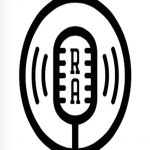instance, in the word “verbal”, the accent is on the syllable “ver-“, so that
it is pronounced (and notated in my transcriptions) as “VER-bal.”
verbal stress from the metric accent of a bar as determined by the time
signature. For instance, Nas in “Don’t Get Carried Away” – QUOTE
word to match up with the metric accent of a bar’s time signature.
different notes by rhyming them together, alliterating them, or through other
poetic means.
of its time signature; for instance, in 4/4, beats 1 and 3 are the strong
beats, and beats 2 and 4 are the weak beats. Thus, we say that beats 1 and 3
receive the metric accent.
qualities of a rapper’s work. Flow is affect by articulation, rate of poetic
accents, the nature and use of syntactical and/or musical phrases, and so on.
rhythms and a focus on tight manipulation of accent and articulation.Whenever
the term “rap” is used in this work, it should be taken to refer to both the
musical and textual qualities of a rapper’s work, as opposed to the other parts
of the typical rap song, i.e., the beat (bass kick, snare, etc.), the
accompaniment (piano chords in the background), and so on.
everything besides the rapper’s work, such as the bass kick, snare, and any
other percussive elements, as well as melodic and accompanimental ideas found
in any specified-pitch instruments (such as pianos, violins, etc.) Note: the
word “beat” should never be used to refer to these musical elements, to avoid
confusion with the idea of a “beat” found in a time signature.
a time signature. For instance, in 6/8, the bottom number, the 8, designates
which rhythmic duration receives the beat: here, the eighth note.
idea whose rhythmic structure is repeated at least once. NOTE: This is vastly
different from the definition of a musical phrase in other musical contexts,
such as classical music.
work by organizers of syntax, such as commas, conjunctions (like the words
“and”, “or”, “but”, etc.), periods, and so on. Indicated notationally by a
curved line under the notes from one note to another one.
derivatives in the organization of almost all rap music. For instance, there
are 4 beats to a bar, different structural elements of a song (verses,
choruses, etc.) are usually organized in multiples of 4 (ending at 8, 12, 16,
etc., number of bars.) The variation of this natural tendency for the
organization of music is a major way forward towards creating new, innovative
rap music.
Metrical Transferrence – The
changing of the metric placement of a musical phrase by a rapper; for instance,
in Biggie “Hypnotize”, the changing of a music phrase from starting on the beat
to starting off the beat.
syntactical phrases; typical of rappers like Mos Def, Nas, and Eminem.
syntactical phrases; typical of most rappers like Kanye West.
scheme over and over, without changing their order.
vowel sound, like Eminem in “Lose Yourself:” Their order can change
if more than one vowel sound is involved.
made on a single syllable.
rap.
certain rap.


 Join the weekly RapAnalysis newsletter at
Join the weekly RapAnalysis newsletter at